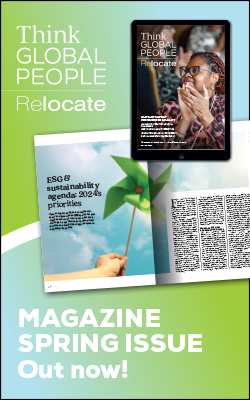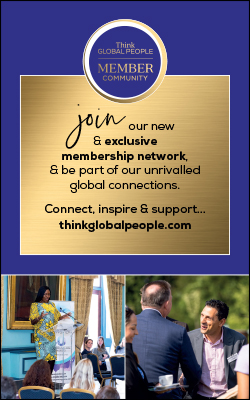Innovation, quality & cost: strategic separation or integration for organisational success?
Employers’ costs are rising and this is impacting on the costs of goods and services. Yet business needs to keep costs low and quality high if they are to maintain sales in the context of the cost of living crisis. And products must continue to be innovative. Dr Sue Shortland explores how business can achieve these desired outcomes through people.

This article is taken from the Winter 2023/24 issue of
Think Global People magazine
Click on the cover to access the digital edition.Recent increases in wages in response to inflationary pressures have led to increased employment costs for business. In addition, increased energy and rental costs have also added to the underlying costs that employers need to pay. As a result, the cost of goods and services has risen as employers have passed on increased labour, energy and property costs to customers, while attempting to maintain their attractiveness to shareholders.In the current cost of living crisis customers are extremely careful as to how they spend their income on both essential and non-essential items. Customers seek out the best prices while simultaneously reviewing feedback from other purchasers to ensure that they receive the highest standards of quality for their hard-earned cash. Customers also seek innovative products and services that closely match their needs and desires rather than simply generic goods. This means that organisations must develop competitive strategies and appropriate supporting HR approaches that can address cost reduction, quality enhancement and innovation.
COMPETITIVE STRATEGIES & ASSOCIATED HR POLICIES
A cost reduction strategy means that goods and services are produced cheaply, potentially more cheaply than the competition, with an emphasis on minimising costs at all stages in the process (including people management). An associated HR policy should imply low-discretion jobs with ad hoc recruitment, minimal training and development, little employee involvement, and low levels of pay. Pursuing a cost reduction strategy as the sole objective though is unlikely to lead to quality enhancement.A quality enhancement strategy means that goods and services are produced at the highest quality possible to differentiate the employer from the rest of the market. In this case an associated HR policy should imply high discretion jobs, highly controlled recruitment and selection, extensive induction, training and development programmes, high levels of employee involvement and empowerment, and competitive pay and benefits with performance appraisal playing a key role. Pursuing a quality enhancement strategy as the sole objective though is unlikely to lead to cost reduction.Added into the mix is the desire for innovation. An innovation strategy means that highly-trained specialists work closely together to produce complex and adaptable products and services. Here an associated HR policy is likely to focus on jobs that allow employees to develop skills across a range positions (flexibility), career paths that develop broad ranges of skills and commitment to organisational goals, the use of problem-solving teams, and emphasis on individualism in learning and development and employee relations. Emphasis may not be on higher pay rates but on employee shareholding and choice within pay and benefits, with performance appraisals to reflect long-term achievement.Related reading
- ESG: Putting the social factor into leadership and global mobility
- The value for research in global people management
- HR leaders call for more tech to help solve talent challenges
- The Flex Factor: a dynamic approach to global mobility policy
HIGH COMMITMENT HRM
What becomes immediately obvious is that the three strategies involve potentially contradictory and/or competing HR approaches. To achieve all three outcomes, namely cost reduction, quality enhancement and innovation, employers will need to combine elements as appropriate potentially for all or for different elements of the workforce using HR practices that can generate a high commitment HRM supporting framework.High commitment HRM typically involves:- Employment security and internal promotion
- Selective hiring and sophisticated selection
- Extensive training, learning and development
- Employee involvement and voice
- Self-managed teams and team working
- High compensation contingent on organisational performance
- Reduction of status differentials/harmonisation
- Performance review, appraisal and career development
- Work-life balance
BUNDLES OF HR PRACTICES
By combining elements of these high commitment practices into complementary bundles appropriate for all or relevant sections of the workforce, it is argued that these HR actions can increase company profits, while supporting organisational strategy pursuing the threefold cost/quality and innovation goal. The impact is likely to be more pronounced when complementary bundles of HR practices are used together. Hence, horizontal integration is needed such that each HR practice supports the others through powerful connections. This should lead to synergies through adoption of a mix of integrated approaches all aligned vertically to organisational strategy.Social changes and context affect the daily work lives and expectations of employees and help shape their attitudes and motivation. Hence, these affect the success and effectiveness of certain bundles of HR practices within different environments. This means that different bundles of high commitment practices will be needed depending on industry and context. As such there is a lack of agreement about what the best bundles of practices are as these will not necessary apply to all organisations. Notwithstanding this, there is an implicit assumption that the bundles of HR practices used will be those that add the most value for shareholders, reflecting a highly managerialist outlook.The contingent nature of many HR strategies affects HR objectives, and these appear to vary according to the different contextual pressures the organisation is facing. For example, an organisation that is experiencing internal pressures such as restructuring is more likely to promote cost control HR objectives compared to organisations that face external pressures such as labour market competition which would focus on employee-centred HR objectives.Applying contingent HR strategies such as these is likely to be appealing to line managers as they can see the relevance to what the organisation is aiming to do in the short term. It can also enhance the credibility of the HR team, who are seen to be business focused.For those who adopt a contingent perspective, good HR strategy is flexible so as to align with the everchanging strategies of a business in an increasingly dynamic economic environment.What is considered to be good HRM practice therefore differs according to the perspective adopted. Those who adopt the best practice view (a universalistic approach) would argue that a specific bundle of HR practices will lead to the best outcomes. By contrast, some would argue that the appropriate strategic HR role is one that asks HR managers to ensure that they deliver the best fit (contingency approach) in tailoring HR strategies to organisational goals.Although neither of these approaches ignores the need for good practice in HRM, both appreciate that good practice is not often common practice – and a common theme in them is the relative lack of focus on employee well-being, compared with delivering for business needs, especially in a highly competitive business environment.THE INTERNATIONAL EXPERIENCE/MOBILITY DIMENSION
One of the key issues in ensuring both a high quality and an innovative goods and services strategy concerns training and development. Yet even when pursuing low cost goals, investment in capability development can result in less wastage in production through fewer errors. It is thus important to ensure that employees have the necessary capabilities in place.Capability development can act as a motivational strategy to attract and retain employees. Through retention, turnover is lowered and recruitment costs reduced. Thus, capability development can contribute to cost reduction strategies. For high-quality and innovative products and services, the development of capabilities and career progression is highly relevant. This is where international experience can pay dividends. Learning from working in different cultures and amongst global workgroups can bring in new ideas that contribute to innovation and also enhance quality.International experience can be gained through expatriation – by living and working in another country – and also through remote working whereby international duties are performed in the home country. International assignments are typically thought to be expensive – it is usually said that a foreign assignment costs three times the home country salary equivalent. That said, the return on investment is high otherwise employers would not entertain the notion of sending people abroad to work for lengthy periods of time.Not all jobs and employees though are suited for global mobility. Employees can also gain international experience and significantly increase their capabilities and competencies through carrying out international work duties remotely while being based in the home country.It is well known that gaining international experience acts as a motivator for employees by enhancing their career progress. Involvement in international teams can take place through working in the home country and thereby create a climate for career enhancement and employee motivation leading to higher innovation and quality products and services. By facilitating international experience by working in the home country, employees can gain international competencies of value to the business and to themselves personally and professionally thus also supporting a cost control strategy (as there is no need for potentially expensive relocation). In summary, organisations today cannot focus on one strategic goal alone – to be successful they need to produce products and services that are cost efficient, of high quality and are innovative. And they need the right HR approach in place to ensure that all three objectives can be achieved simultaneously. The desired outcome is also threefold – productive and satisfied employees, profitability to ensure future investment by shareholders, and satisfied and loyal customers who produce reviews that attract more business, thereby creating a cycle of success.Read the latest issue of Think Global People/Relocate magazine. Read your copy here.
Find out about becoming a Member of our Think Global People community and keep up with our latest events, webinars and podcasts.
Subscribe to Relocate Extra, our monthly newsletter, to get all the latest international assignments and global mobility news.Relocate’s new Global Mobility Toolkit provides free information, practical advice and support for HR, global mobility managers and global teams operating overseas.
©2024 Re:locate magazine, published by Profile Locations, Spray Hill, Hastings Road, Lamberhurst, Kent TN3 8JB. All rights reserved. This publication (or any part thereof) may not be reproduced in any form without the prior written permission of Profile Locations. Profile Locations accepts no liability for the accuracy of the contents or any opinions expressed herein.






























